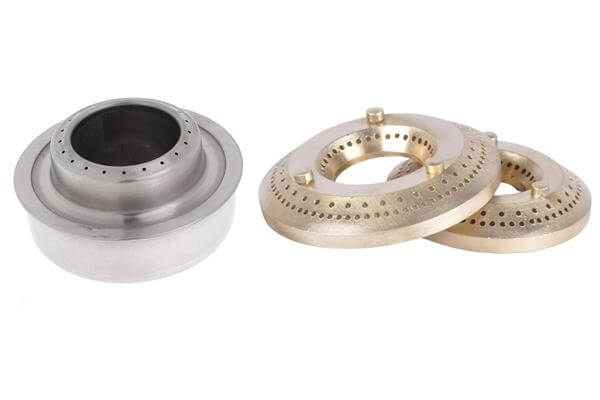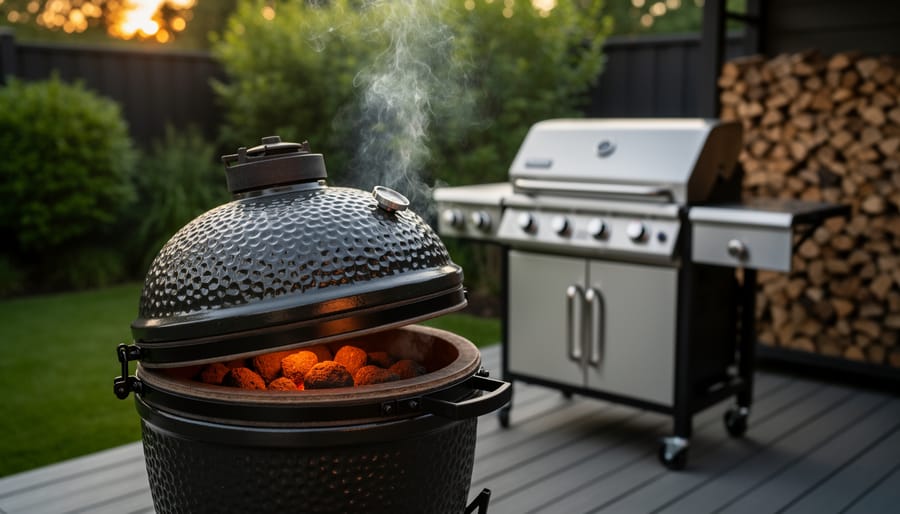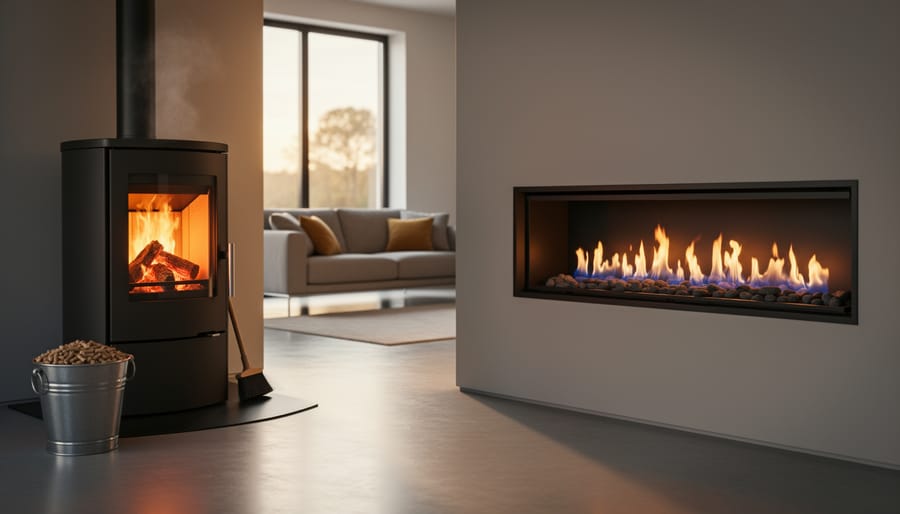We know that you want to ensure your stove burner is the right one for you. And that’s why we are here. But before we get into brass vs. stainless steel, we must know how they work and why they are different.
Brass Burners Vs. Stainless Steel Stove Burners
Many times, people wonder what kind of material to use for their gas stoves. This article will go over the advantages and disadvantages of each one of them to put you in a better position if you are faced with the decision between brass burners and Stainless steel.
Brass Burners are Not Durable
As you can see, brass burners are not sturdy and do not last long. The heat efficiency of brass burners is not the best. The metal gets hot very fast, but it cools down quickly too. That’s why you must keep turning around your stove every few seconds to ensure that all pans have been heated evenly.
Brass stove burners are known for their short life span. On average, they last between three and five years compared to stainless steel panels, which typically will last anywhere from eight to fifteen years, depending on how well their manufacturers originally made them. Stainless steel panels can be recycled after use.
Brass Burners are Not Heat Efficient
We strongly urge you to reconsider if you are in the market for a new stove and have been considering brass burners. Brass burners are not heating efficiently. This means that it takes longer for the cooktop to heat up and for temperatures to stabilize when using them.
Their construction material (pure brass) also conducts heat slower than stainless steel or aluminum cooktops due to their higher thermal conductivity rating. This can result in uneven heating as well as hot spots on your stovetop which will cause food items placed directly over one spot on your stovetop to burn before cooking thoroughly.
Brass burners also don’t retain heat very well so if you want something that gets hot quickly but doesn’t retain its heat long enough after removing from its source of power (your gas or electric range) then these may be ideal for you!
Brass Burners are Not Easy to Clean
Brass burners are not easy to clean. The brass tends to stain, tarnish, and pit over time. In addition, the anodized layer on the outside of a brass burner can chip off when scratched. It takes more effort than stainless steel burners because you need special cleaning products for brass that will not damage its finish or leave any streaks or stains behind.
Also, brass burners are difficult to clean because they get filthy if you don’t clean them regularly with soapy water or any other cleaning agent. Even though copper is resistant to corrosion, this does not mean that it won’t be affected by rust if exposed for long periods without being cleaned regularly.
Brass Burners Do Not have a Long Lifespan
Brass burners are not durable. They do not last long and cannot withstand heat for long periods. If you want to enjoy your cooking, you will have to replace the brass burners with stainless steel ones, which are more durable and heat efficient.
In addition, brass burners do not have a long life span compared to stainless steel burners. If you have any problems with your brass burner, it may cause a fire hazard in your kitchen and damage other appliances around it (like ovens).
Stainless Steel Burners are Durable
Stainless steel burners are durable. They can withstand high heat, and they last for a long time. The surface of stainless steel won’t rust or tarnish over time. It’s easy to clean too! You don’t have to use harsh chemicals on it, just regular soap and water will do the trick!
Stainless Steel Burners make for a more efficient stove as well. The material is resistant to heat transfer, which means less energy is lost when transferring from the top surface into your pot or pan.
Stainless Steel Burners are Heat Efficient
Stainless steel burners are more efficient than brass burners and have a higher BTU output.
Stainless Steel Burners are Easy to Clean
Stainless steel burners are easier to clean. They don’t rust, so you don’t have to worry about them getting stained or discolored. Also, steel burners can be cleaned with just soap and water if you are in a hurry. Brass burners will require some elbow grease and a bit more time spent scrubbing off the stains and grime from previous meals prepared on your stove.
Stainless Steel Burners have a Long Lifespan
Stainless steel stove burners are durable and easy to clean. They are also extremely heat efficient. That means they can withstand high temperatures and last a long time. Stainless steel burners are also resistant to corrosion, so they won’t rust as easily as brass ones. Because of their durability and ability to withstand high temperatures, stainless steel stove burners can be used on gas or electric stoves without any problems whatsoever!
Stainless Steel Stove Burners
It is an alloy material that is composed of two or more distinct melted elements, mainly iron and chromium. This allows it to be used in many different ways for various purposes.
Pros:
- Easy to clean
- Cheaper
- Lead-free
- Nickel-free
- Corrosion-resistant
- Made using recycled materials
Cons:
- Not as durable as Brass
- Not as attractive as Brass
- The product comes with a shorter warranty from the manufacturer
Brass Stove Burners
Brass is a metal that is an alloy made of zinc and copper. Depending on the requirements, they can be altered in proportions to produce different properties. Due to its gorgeous gold appearance, it’s commonly used for ornamental purposes.
Brass is denser than other materials. It is often used at high temperatures. It does not pit or oxidizes. It is employed in many applications like electronic parts, decorative products, and marine hardware.
Pros:
- Durable
- Corrosion-resistant
- Beautifully aesthetic
- Conductivity at a high level
- Comes with an extended warranty
Cons:
- Expensive
- Not lead-free
- At the risk of tarnishing if exposed for a prolonged period
- Not as resistant to corrosion as stainless Steel.
Stainless Steel is the Best Option for a Replacement Burner
Stainless steel is the best option for replacement burners. It’s durable, heat efficient, and easy to clean. Stainless steel burners also have a long life span, which means you get value for money.
Stainless steel burners are also easy to clean and maintain, which means you don’t have to worry about rust or corrosion. They are also resistant to heat, so they won’t melt or warp when exposed to high temperatures.
Final Words
It is crucial to comprehend the benefits of choosing one type of material over another. Be sure to choose the correct burner based on your budget, usage requirements, and aesthetics if you consider these.
The question of brass vs stainless steel stove burners is important for anyone who owns a stove. The answer to this question can be complicated, so we hope this article has helped you understand the pros and cons of each option.
Brass burners are often used in professional kitchens because they are highly durable and heat efficient, but they also have some downsides like being difficult to clean or having short life spans.
Stainless steel burners are not as strong as brass ones, but they offer some benefits, including being easy to use and cleaning up after use with soap water than just soap alone!






